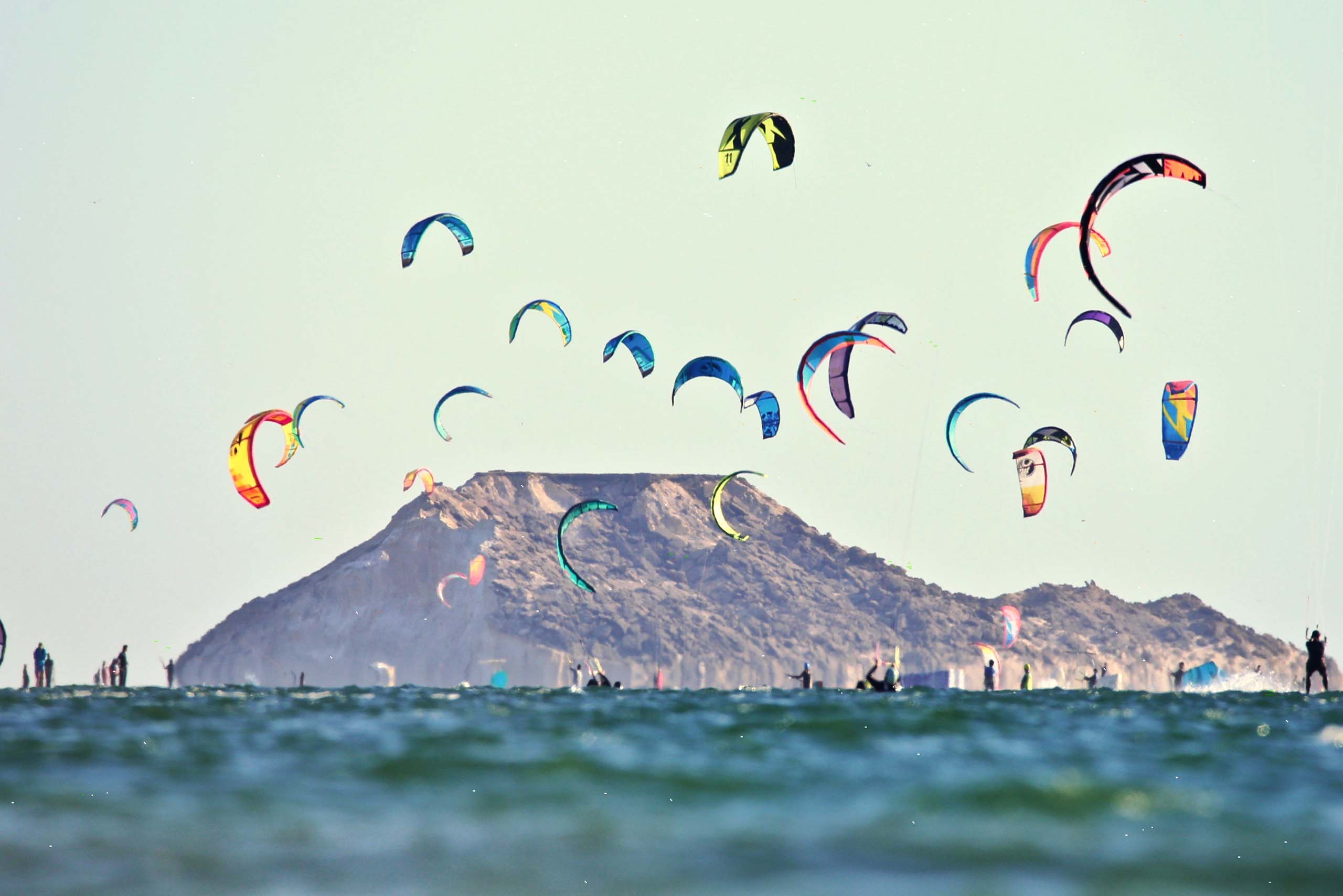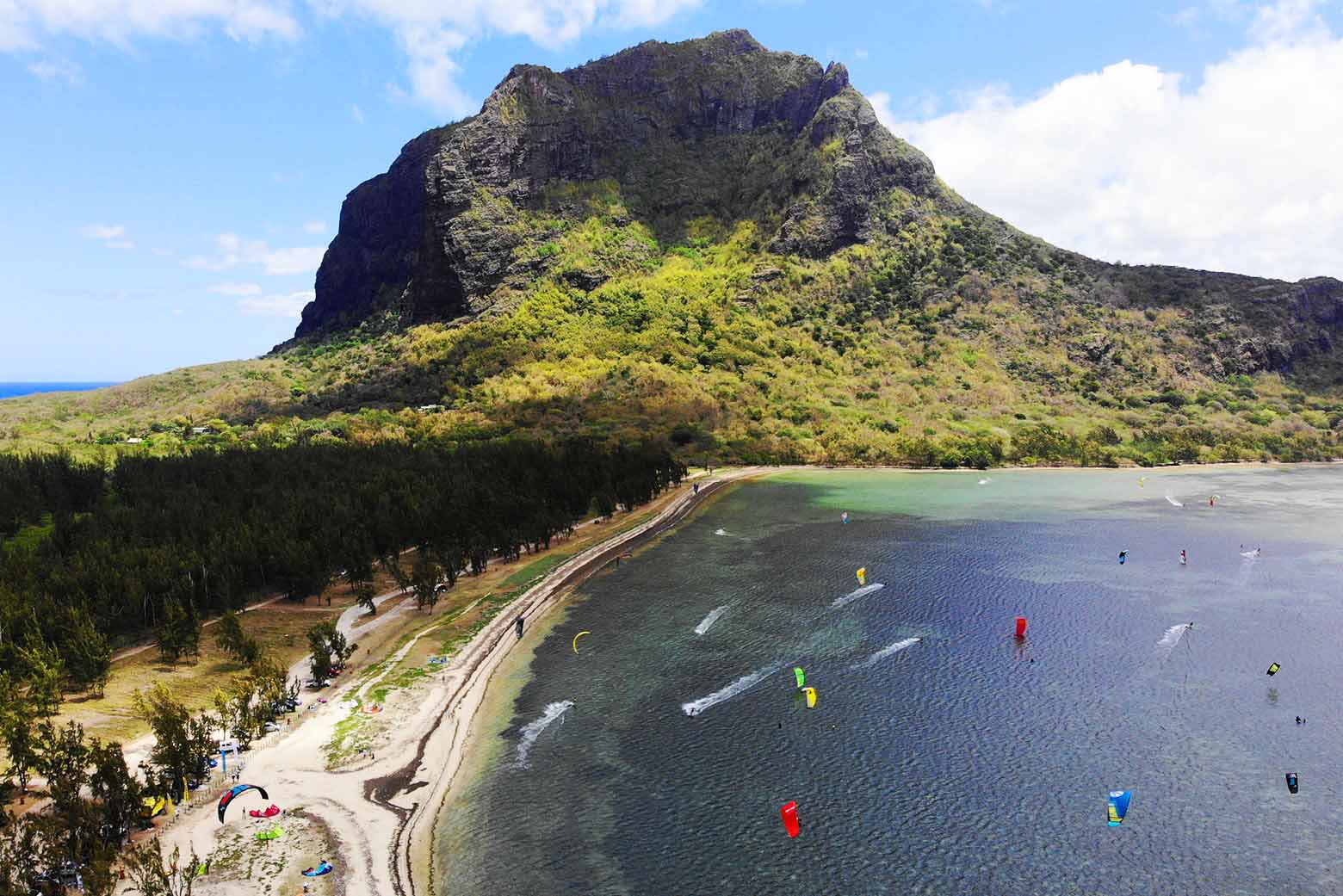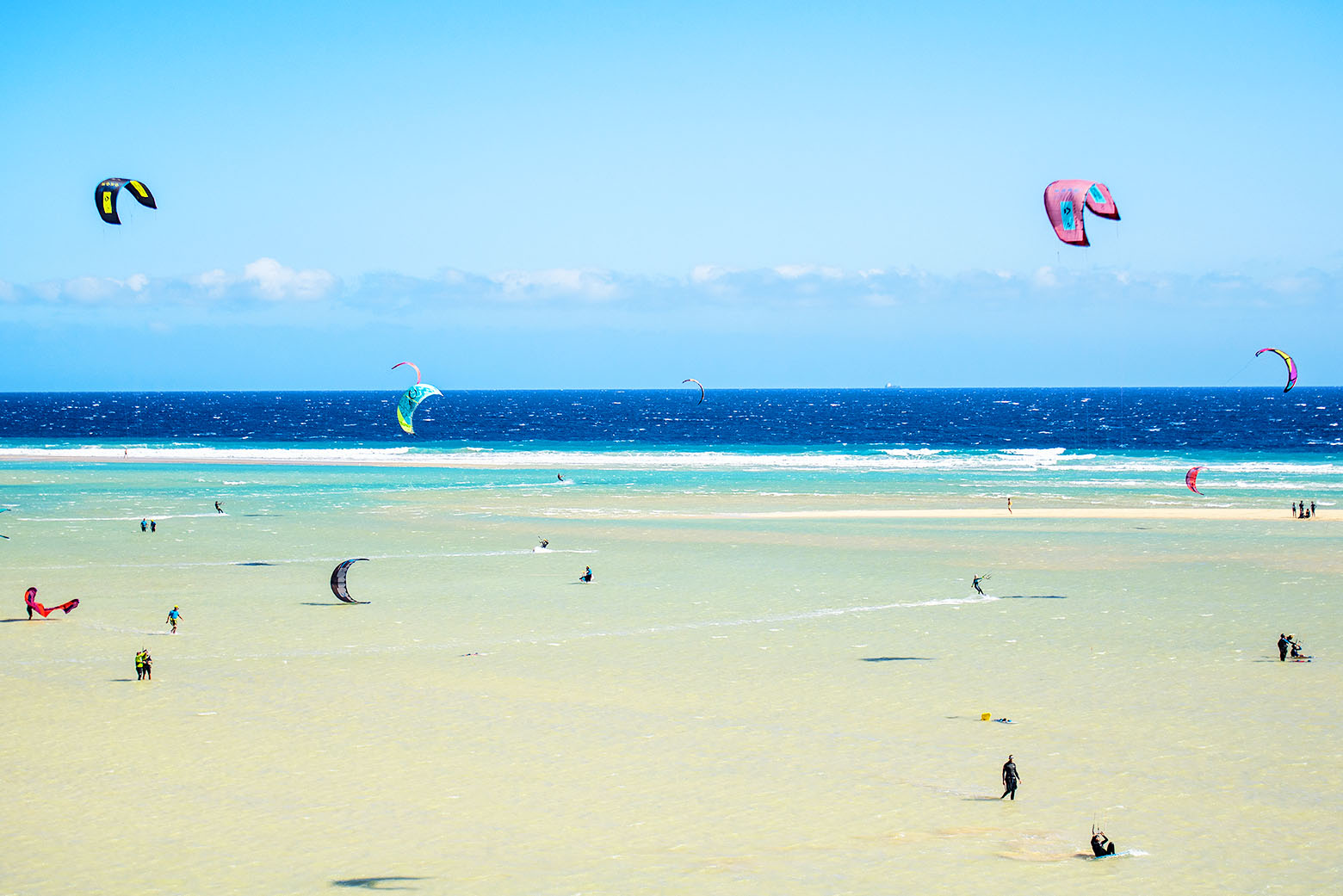How was kitesurf born?

How was kitesurfing born?
Kitesurf, flysurf, skysurf … what should we call a kite or maybe even a sail that pulls us along on a board? Still little known, or even completely unknown until the end of the 90’s, it is true that sometimes people who were not familiar with the world of surfing tended to mispronounce the word kitesurfing, which owes its origins to being pulled by a kite while gliding along the water and standing on a board … and it’s a real pleasure!
How is kitesurfing known?
At the end of the 1970s, the famous French waterman and adventurer Arnaud de Rosnay tried his hand at the parafoil, a kite that pulled him along whilst sitting on a very large board. This revolution in the world of sailing gave ideas and inspiration to others, such as being pulled across the water while standing on skis, on a boat or in a sand yacht, and using a kite-like sail or wing.
It took many years for kitesurfing itself to really become known and to start to interest the general public. In fact, at the very beginning, it was called a kite or traction kite (box kite), which was lighter and did not need to be inflated by a pump like most kites today.
At the end of the 90´s the name kitesurfing materialized, and the sport accelerated in its notoriety on the other side of the Atlantic and even the Pacific, in Hawaii, thanks in particular to professionals of the surfing and the windsurfing world such as Laird Hamilton and Emmanuel Bertin.
Finally, in 1998, it was a Frenchman, Raphaël Salles, who was inspired by all of these ingenuities and who, on a small windsurfing board, tried his hand at kitesurfing with the magic of these revolutionary sails called a wing or a kite.
Gliding along on the water, surfing the waves, performing jumps and loops in all directions … the sheer pleasure of having fun and thinking of nothing else when you are on your board!
How did kitesurfing develop once it was recognised?
Little by little, the inflatable kites have improved, as well as the boards, and the ability to tack more easily thanks to the birth of the twin tip boards – 2 mini fins on each side of the board.
Let’s not forget the Wipika brand created by the Breton brothers, who greatly contributed to the development of kitesurfing by taking inspiration from paragliding. The traction bars also have their importance in the development and improvement of kitesurfing.
Through several organizations such as the French Federation of Free Flight, the International Kiteboarding Organization and others, kitesurfing became so vastly talked about at the end of the 90’s, or even the beginning of the 2000’s, that it almost became a victim of its own success! Many instructors had to be trained to introduce the general public to this “new generation” sport.
How to learn to kitesurf?
Only the bravest and most foolish people wanting to start kitesurfing will try to learn this popular sport by themselves. There is potential for accidents, which is why it is undoubtedly necessary to go through a school to get the most enjoyment from learning kitesurfing.
Today it is very easy to find kitesurfing schools all over the world. ION CLUB, formerly known as CUB MISTRAL, offers this choice with nearly fifteen schools worldwide. You will find their centres in many countries such as Spain, Greece, Morocco, Cape Verde, Egypt, Dominican Republic and Mauritius. A wide range of choices with all the comforts you can imagine, and professional and experienced instructors.
The beach facilities of the ION CLUB centres do their utmost to welcome future kitesurfers, but also riders who have already started out with the aim of finally becoming independent. For those who prefer to travel light, equipment rental is available in almost every centre. Supervision, security on the spot and beach assistance will accompany every kitesurfing member of ION CLUB, including those who have chosen to bring their own equipment.

Why is kitesurfing still growing?
Gliding along on the water, surfing the waves, performing jumps and loops in all directions … the sheer pleasure of having fun and thinking of nothing else when you are on your board!
Aeolus, the Greek God of winds, is our best friend to give ourselves to the joys of kitesurfing. Being with the elements, the wind and the water, the adventure of being in tune with nature, and the love and infatuation for this outdoor water sport means it can become more than a hobby, it can become a real passion.
The number of kiteboarders worldwide must surely be close to one million today. In summer as well as in winter, it is always possible to kitesurf in certain regions or countries. A good wetsuit in winter if it’s in Europe and you’re on a kite board, tacking away from the daily grind. For the lucky ones amongst you, take a week’s holiday and hop on a plane to the warmer waters to find yourself on a dream spot!
Kitesurfing has really progressed over time, and this is mainly due to the professionals of the kite, sailing and boarding world. The equipment becomes more and more efficient every year, and above all safer.
Kiteboarding also allows us to meet new people with a shared passion, leading to help in launching or landing the kite, advice from the most experienced, exchanges of weather information … in short, a synergy and an exchange between kiteboarders which allows the sport and the professions linked to it to continue to preserve a good image of this incredible pastime.
Finally, in recent years, kiteboarding has seen its evolution intensify thanks to lighter and more manoeuvrable kites, surfboards designed specifically for kiteboarding or strapless (without footstraps), and the invention of the kite foil associated with traction kites in light winds.

What is the future of kitesurfing?
For some of you, kitesurfing is a passion, for others a holiday sport. Whatever the reason for doing it, kitesurfing will never cease to exist as long as it brings fun and happiness. The progression in kitesurfing is wide, and even if you think you know it all, there will always be a new trick to learn or the latest kite to try!
The numerous kitesurfing centres and professionals, the thousands of kitesurfers, the new equipment and the second hand market which is growing year after year ensures that everything is in place to satisfy a large public of passionate kitesurfers for an indefinite period.
